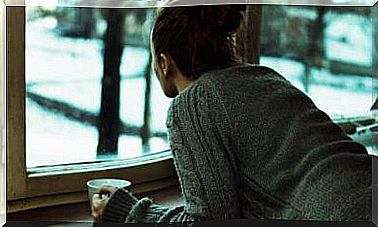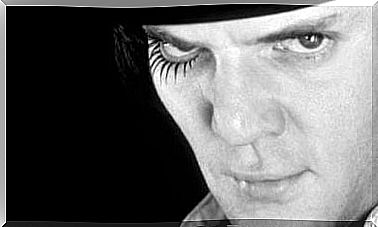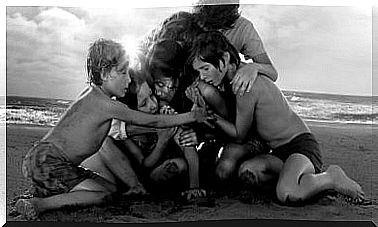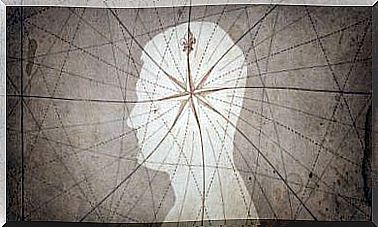El Hoyo: Where Is Solidarity?
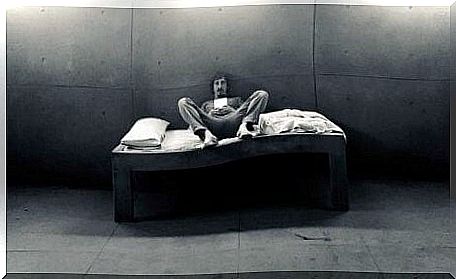
Spanish science fiction is in luck, genre films can be made from simplicity, without the need for superfluous decorations that end up diverting attention. Far from the exorbitant budgets that contemporary science fiction blockbusters handle, El Hoyo won the Audience Award at its world premiere at the Toronto Film Festival. And at the Sitges Festival it has received the Best Film Award.
El Hoyo places us in a dystopian, gray and bleak setting. In a kind of vertical prison with an unknown number of levels, two individuals survive on each level ; their food comes only from a platform that descends through all the levels. In this way, those at the higher levels will be able to enjoy copious meals, while those at the lower levels will have to fight to survive.
The levels are random and, once a month, individuals will change levels, being one month at the top and the next at the bottom of this well. Can the food be distributed equally or will those at the top forget that they could end up at the bottom?
The film, signed by Galder Gaztelu-Urrutia, presents a universal and easily recognizable message, satirizing our own world and inviting the viewer to project themselves in it, to recognize themselves and to consider how they would act on each of the levels. We offer you a small preview of this film that will remind many of Cube (Vicenzo Natali, 1997).
Between intrigue and social criticism
El Hoyo is a dystopia posed in the key of a thriller and contains a clear message that is evident from the first minutes of the footage. The sober and icy aesthetic accompanies a rather hopeless story, but with an important component of truth. It will not take long for the viewer to recognize the allegory, to see in this prison a mirror of our own society.
Thus, we follow Goreng, played by a brilliant Iván Massagué, a man who voluntarily accesses the hole for the sole purpose of obtaining an approved title, quitting smoking and reading Don Quixote. In fact, the Cervantes work will be very present in the story and Goreng, like the ingenious gentleman, will experience his own descent through the Cueva de Montesinos – saving distances, of course.
Goreng wakes up in one of the intermediate levels and discovers that his partner is an older man, Trimagasi, who has been in prison for a long time and knows the mechanics of it in detail. Trimagasi’s selfishness contrasts, at first, with Goreng’s good intentions, but both will end up adapting to coexistence, although not for long …
Despite being aware that a month may be down with hardly any food, individuals in the upper levels hardly leave food for those at the bottom of the prison. As those at the bottom end fight for their survival, they perform sacrifices and acts that could never have been imagined.
Thus, a cruel allegory of our world is taking shape, a world full of inequalities in which you are as soon as at the top as at the bottom of the pyramid.
In the midst of this allegory, of this austere and gray space that will soon be soaked in blood and guts, there is also room for intrigue, which will progressively spin and keep the viewer alert at all times. The tension will increase towards the end, it will make us wonder what we would do in that situation, how we would solve the problems that arise and, at the same time, we will try to understand what exactly is happening in the hole.

El Hoyo : from the satirical to the hopeless
It will not be easy to break the rules of the hole, to find the key to end this vertical prison in which those who truly pull the strings are totally oblivious to what happens in the hole. How to get a message to those who do not want to hear, to those who do not want to see? How to change the rules if you are down?
The message conveyed by the film is clear and forceful, but it is not an imposition, but rather seeks to meet the purest fiction and move away from indoctrination. The Hole makes us part of something that we all know, but we tend to forget easily, looking the other way and thinking only about what we have before our eyes.
Can spontaneous solidarity arise in a vertical society? Some characters will appear idealistic, but hopelessness and the need for survival will soon take over the ideals.
It seems that there is no place for solidarity and empathy, not even when people have experienced the bitter side of the hole in their own flesh. Greed and selfishness prevail at the higher levels; in the lower ones, it will be survival; while in the intermissions, things seem to take different directions.
And so, as in our societies, problems and needs differ greatly from one part of the world to another. In some way, El Hoyo reminds us of the very structure of our systems and our natural tendency to forget scarcity when faced with abundance.
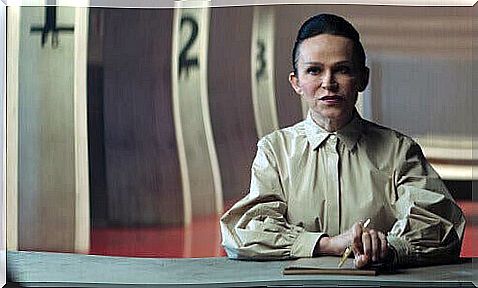
At the same time, the satirical element is very present in El Hoyo , even the eschatological moves in perfect harmony with the crudeness of the film. No, it will not make us smile, but we will get a kind of catharsis in some key moments. Dystopias seem to adapt very well to our present and allow the viewer to see the consequences of their own actions in the not-so-distant future.
In the era of climate change and inequalities, these types of films take us a little out of that bubble of comforts in which many of us live, they invite us to reflect and open our eyes to something that, in reality, we have in front of us.
Although the space is invented, the rules and characters seem to be taken from our daily lives. Well-defined characters, who embody different values and who will gradually adapt to meet the needs of the level in which they live.
Everything seems to indicate that Galder Gaztelu-Urrutia’s debut feature will give a lot to talk about, as it addresses a universal question and, despite the harshness of its images, it can be seen and understood by any viewer. In short, we are faced with a dystopia that is not far-fetched, it hooks us and will keep us in suspense until the last minute, finally inviting us to think about the future.

